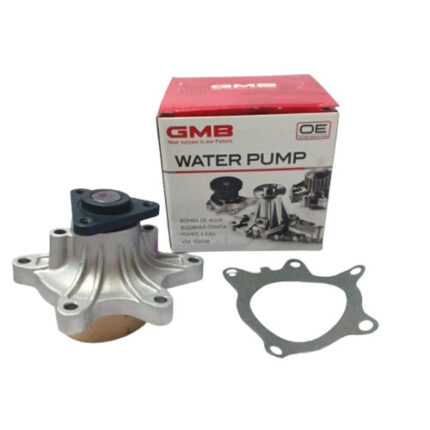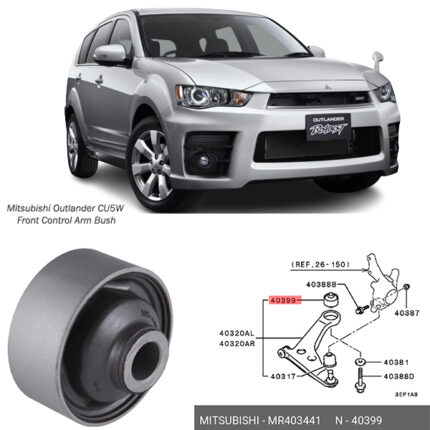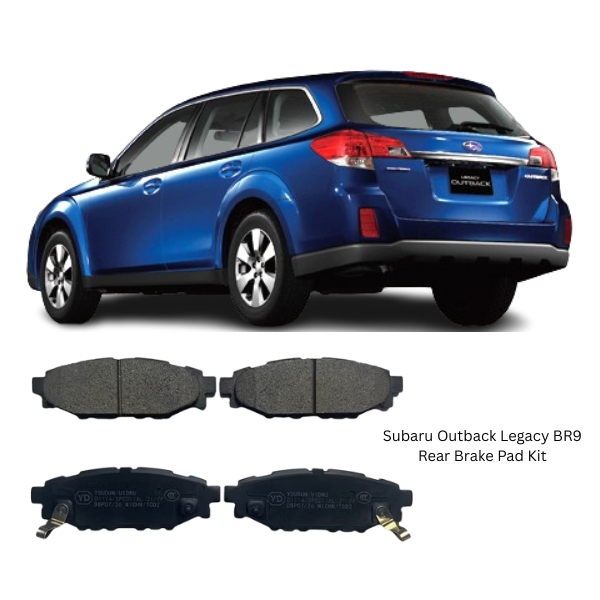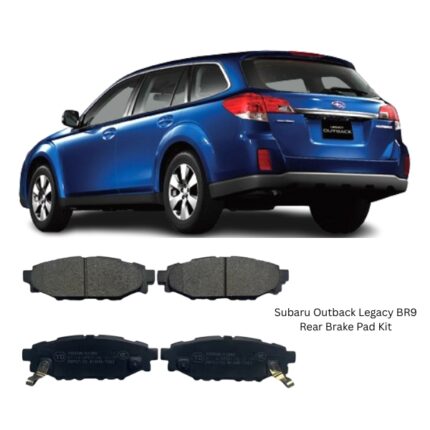Get Subaru Outback Legacy BR9 Rear Brake Pad Kit D7064 in Kenya
The rear brake pad kit is a crucial component of a vehicle’s braking system, specifically engineered to provide consistent braking performance, optimal vehicle balance, and dependable safety. While rear brakes may not handle as much braking force as the front, they play an essential role in stability, especially during emergency braking and heavy load conditions. Their proper maintenance and timely replacement are vital to ensuring the overall effectiveness of the vehicle’s braking system.
A quality rear brake pad kit is designed to meet or exceed original equipment specifications, delivering reliable stopping power, reduced brake noise, and long service life. This description provides a thorough understanding of what rear brake pads do, how they work, how they’re constructed, the warning signs of wear, and best practices for maintenance.
Function and Purpose of Rear Brake Pads
Rear brake pads are friction elements in a disc brake system located on the rear wheels. When the driver applies the brakes, the vehicle’s hydraulic system activates the brake calipers, which in turn press the pads against the rotating brake rotors. This contact generates friction, which slows down the rotation of the wheels and brings the vehicle to a controlled stop.
While the front brakes handle most of the braking load due to weight transfer during deceleration, the rear brakes are essential for:
-
Maintaining vehicle balance and control
-
Distributing braking force evenly
-
Supporting heavy loads or towing conditions
-
Assisting in emergency stops and high-speed braking
-
Reducing wear on the front braking system
Because of these roles, rear brake pads must function smoothly and consistently under a range of operating conditions.
Components of a Rear Brake Pad Kit
A complete rear brake pad kit typically includes:
-
Two Rear Brake Pads (Inner and Outer per side): The main components responsible for generating friction against the rotor.
-
Anti-Rattle Clips or Shims: Designed to prevent movement between the pad and caliper, helping reduce noise and vibration.
-
Wear Sensors (optional): These may be mechanical or electronic and alert the driver when pad material is near the minimum thickness.
-
Brake Lubricant: Specialized grease for use on contact points to reduce friction and squeaking.
-
Hardware Kit (if included): May contain pad spreaders, mounting clips, retaining pins, or guide pin boots, depending on vehicle design.
Each element of the kit contributes to a quiet, effective, and secure braking system.
Brake Pad Material Types
The material used to construct the rear brake pads determines performance characteristics such as braking strength, noise level, dust output, and lifespan. Common types include:
-
Semi-Metallic: These are composed of metal fibers (such as steel or iron), friction modifiers, and binding resins. They offer good heat resistance and stopping power, making them suitable for a variety of driving conditions.
-
Ceramic: Constructed from ceramic fibers and bonding agents, ceramic pads offer quieter operation, low dust generation, and long service life. They’re well-suited for smooth, everyday driving.
-
Organic (Non-Asbestos Organic or NAO): Made from materials like rubber, glass, and Kevlar, these pads offer smooth engagement and minimal noise but wear faster under heavy use.
-
Low-Metallic NAO: A mix of organic materials and small amounts of metal to enhance heat dissipation and braking power.
Choosing the appropriate material depends on driving style, load conditions, and performance needs.
Performance Characteristics
A high-quality rear brake pad kit delivers consistent and safe braking across various road conditions. Key performance features include:
-
Friction Stability: Maintains reliable braking force in both low and high temperatures.
-
Noise Dampening: Precision-engineered shims and clips minimize vibrations and reduce brake squeal.
-
Thermal Management: High-quality materials dissipate heat efficiently to prevent brake fade.
-
Dust Control: Low-dust formulations help keep wheels clean and maintain braking efficiency.
-
Pad and Rotor Compatibility: Designed to work harmoniously with rotors to reduce wear and improve lifespan.
-
Balanced Braking: Ensures consistent braking force distribution between front and rear for safe handling.
These attributes contribute to a smooth driving experience, extended service life, and improved vehicle control.
Installation and Fitment
Rear brake pads must be carefully matched to the vehicle’s caliper and rotor specifications. The correct pad thickness, shape, and backing plate dimensions ensure a secure fit and efficient operation. Most rear brake systems feature either a floating caliper or a fixed caliper setup, and the pad kit must be compatible with the design.
During installation, technicians should inspect and clean the caliper slides, replace any worn hardware, and apply brake grease to the contact points. In some vehicles, rear calipers also incorporate the parking brake mechanism, which may require special tools or reset procedures during replacement.
It is recommended to replace rear brake pads in pairs (left and right) to ensure even braking performance.
Signs of Worn or Faulty Rear Brake Pads
Worn rear brake pads can compromise braking safety and should be addressed promptly. Common signs of wear include:
-
Squealing Noise When Braking: Often caused by the wear indicator contacting the rotor or by hardened pad material.
-
Grinding Sound: Indicates the friction material is fully worn, allowing the metal backing plate to contact the rotor.
-
Increased Braking Distance: Worn pads are less effective, resulting in longer stops.
-
Brake Warning Light: Many modern vehicles include sensors that trigger a dashboard alert when pads are worn.
-
Uneven Pad Wear: Often due to stuck caliper pistons, misalignment, or worn hardware.
-
Vibration or Pulsation: Caused by uneven contact surfaces or warped rotors.
-
Visible Thin Pad Material: Pads with less than 3mm of material remaining should be replaced.
Timely replacement prevents rotor damage and maintains braking efficiency.
Lifespan and Maintenance
Rear brake pad life depends on several factors, including driving habits, vehicle weight, terrain, and braking frequency. On average, rear pads can last anywhere from 40,000 to 80,000 kilometers, though this can vary widely.
To extend pad life and ensure safe braking:
-
Avoid aggressive braking whenever possible.
-
Inspect pads during routine vehicle maintenance.
-
Flush and replace brake fluid every 1–2 years to prevent corrosion and hydraulic issues.
-
Ensure brake components are properly lubricated and calipers are functioning smoothly.
-
Rotate tires regularly to balance brake system load distribution.
By incorporating regular checks into vehicle service intervals, premature wear and system failure can be avoided.
Packaging and Storage
Rear brake pad kits are securely packaged to prevent damage during shipping and storage. Each pad is typically protected by a sleeve or wrapper to avoid contamination. All accompanying hardware is individually bagged and clearly labeled. Kits should be stored in a clean, dry environment, away from moisture and extreme temperatures, to preserve material integrity and ensure proper installation when needed.
Follow us on Facebook for more parts.




